Growing poultry at home is taken for three reasons:
- always available fresh eggsrich in nutrients;
- for personal use dietary meat;
- with the aim of realizing the excess eggs and meat.
Ways and methods of its cultivation also different.
You can collect eggs from laying hens and lay them in an incubator, or buy eggs and incubate them. A very common option is buying broods of chickens, followed by their growing. How to feed chickens and care for them in the first days of life, read below.
Table of contents
Growing and keeping chickens from the incubator at home
In the first days of the newborn chickens are kept in carton box. Then transplanted into special cells. You can immediately grow chicks in cages. Requirements for conditions of detention: the air temperature in the first days of life is above 27 degrees, then it is gradually lowered (monthly chicks can be set to a temperature of 20 ° C); humidity air - around 70%; protect your chicks from drafts and dampness; give only quality feed and clean water (let's talk about nutrition below); increased light day (with age, it gradually decreases to normal daylight hours); keep growing area clean; it is desirable to provide ventilation; the room should be sufficient for free food intake (if it’s not broiler chickens,you can keep them in a larger room); follow to feeders were clean, give porridge in separate troughs or in one partition; drinking bowl select the bird according to the age, make sure that the chicken does not choke on it.
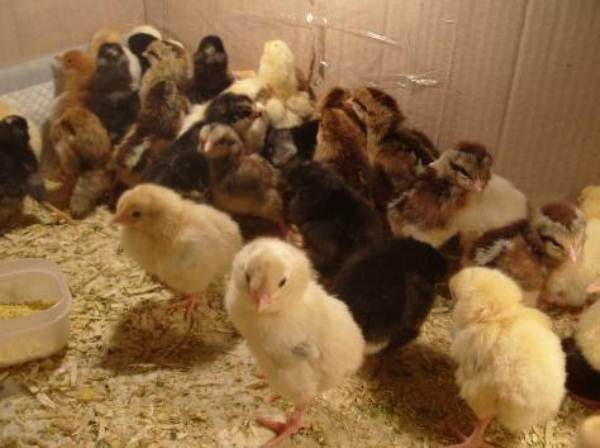
If hatching chicks are kept in pen, then care of them is the same as when grown in cages. Special attention needs to be paid litter on the floory To avoid disease, it must be dry and the floor must be warm. Due to the fact that the total area of the pen is larger than the total area of the cage with an equal number of livestock, make sure that the feeders and the trough are positioned in such a way as to prevent their turning over to the chickens.
Conditions and proper care for newborn chickens with hen
If you want to pick up chickens from a quiver without setting chicks to it from other hens or incubators, you need to remember that chickens are not recommended immediately after they emerge from the egg take away from the hen. It is necessary to give them time to dry, then transplant into a box of corrugated paper in a warm room with an ambient temperature above 27 degrees.
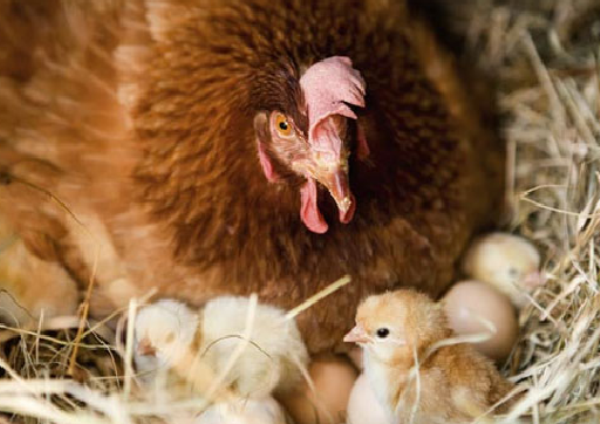
If this is the case, it is necessary to plant chickens from other hens or after an incubator, then we do everything carefully and carefully. To do this, held a number of preliminary events:
- chickens sit down from a warm room, so that the chicks' body temperature does not differ from that of its own brood;
- plant a brood preferably in evening time, closer to the night;
- coloring the placed chickens should not differ sharply from their own;
- must be small age difference chicks (up to four days);
- set down should be all the chicks at once, and not one by one.
After the chicks are born, they, a little dried, are transferred to a special poultry house (equipped room for rearing). General requirements:
- temperature indoors in the first days should be above 23 degrees (for newly hatched chickens, this air temperature is low,but if they are kept with a hen, then there will be no hypothermia); care must be taken that it is not hot;
- air humidity must be in the range of 67- 73 percent (dry or over-humid air adversely affects the health of the offspring);
- complete absence drafts;
- floor must be wooden or covered with straw, another litter; make sure it is not wet;
- feed and water chickens preferably separate from chicken. To do this, we put a separate feeder and drinker.
The ambient temperature decreases with increasing age of the chickens. For two weeks young You can lower it to 20 degrees. It is useful to let them out for a short time on the street with an adult on a special pad for walking. Such a site should be fenced off from all sides and covered with a protective mesh on top. The walls of such walking should not be made of fabric mesh, so that the young do not get entangled in it. It is mandatory to ensure the possibility of free return to a warm room after a short walk of a young bird.
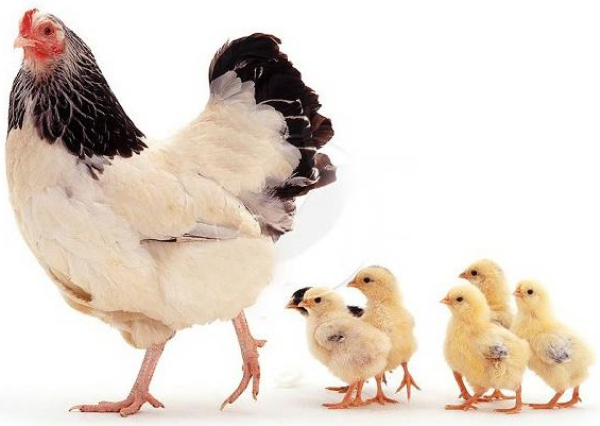
A hen for chickens is needed until they reach one month of age.Then they should be grown separately.
Benefits rearing chickens
- Percent case decreases;
- Additional heating for chicks;
- Protection from predators.
How to feed and care, what can be given
This process boils down to what the bird needs to be given. quality feed with all the necessary components. Feed composition differs depending on the age of the young and the mass of the young. Its amount also depends on the above factors. Without fail, provide free access to feeders and drinkers. Young livestock can be given food dosed (several times a day), and it is possible that he was constantly in the feeders, if necessary, filling it up.
In the first days of life
If grown non-broiler chickensthen in the first days of life they can be given chopped hard-boiled egg or egg powder. If your livestock consists of broiler chickensit is advisable not to give the egg in any form other than powder. The main feed in the first 3-4 days is millet. Do not recommend give wet food, crushed grain. Make sure that the water in the drinkers is fresh and warm, diluted with potassium permanganate (without changing the color to a pinkish hue). You can water the weak water glucose solution.
In the week and two weeks
Starter feed we begin to give from the fifth or sixth day of life. Add to water vitamins. Teach them to eat cottage cheese. Moisturize food a little whey.
Daily rate food consumption at the age of a week reaches 15 - 30 grams. It depends on the breed, the weight of the bird, other factors.
In moistened starter feed stirred greenery (up to 7% of the total amount of feed), for example, finely chopped onions, at the rate of 1:20. It contains the necessary vitamins. In the feed, you can add the reverse, yogurt, buttermilk, mix crushed egg shells, fodder yeast, grated carrots in small quantities. Sand young need not be given.
Feeding Monthly Chicks
At this age, young growth is given granulated feed, which includes minerals, protein, cereals (wheat, barley, peas, corn),amino acids and vitamins. Finely cut the green mass in the form of cabbage leaves, green onions, lettuce, nettle. We continue add to feed whey, meat and bone meal, meal or cake. It is possible to replace growth feed with crushed grain. When the young are one month old - you can give porridge. It is especially good to give it if the bird is raised for meat.
Not recommended feed the chickens with bread and clean boiled potatoes.
Table of the norm of feed consumption from the first week to a month
| Age, weeks. | Live weight, grams | Feed intake per 1 head per day, grams | Diet | Note |
| 1 | 80 | 15 | Starter feed | If, instead of starting and growth feed, crushed grain is given, porridge, consumption rates change significantly. The transition from starter to growth feed is determined by the age of the young and its weight. |
| 2 | 150 | 20 | Starter feed | |
| 3 | 250 | 27 | Starter feed | |
| 4 | 350 | 35 | Growth feed |
Table of daily ration of young stock: mixed fodder, nettle, etc
| Feed, grams | Age, weeks | |||
| 1 | 2 | 3 | 4 | |
| Crushed grain (may include wheat, corn, oats, barley, peas, etc.) | — | 8,0 | 15,0 | 22,0 |
| Millet, egg powder | 15,0 | — | — | — |
| Cake, meal | 0,4 | 0,6 | 0,7 | |
| Hard Boiled Egg | 1,0 | 2,5 | 2,5 | |
| Milk reverse serum | 12,0 | 18,0 | 30,0 | |
| Bone flour | 0,1 | 0,3 | 0,6 | |
| Greens and carrots | 4,0 | 8,0 | 15,0 | |
Diseases and their treatment, essential vitamins
At different age stages chickens and youngsters are sick various diseases. However, there are common diseases for all ages. When they reach the age of one month, youngsters may also have diseases of adults. Some diseases and methods of treatment:
- Dyspepsia - disease of the digestive tract of day-old chicks. It is also recommended to separately prepare an aqueous solution of glucose;
- Avitaminosis - may occur at 5 days of age and later. To prevent it, you can drop “Trivitamin” in the beak of each chicken;
- Various infections. Add “Baytril” to the water at the rate of 0.5 grams per 1 liter of water;
- Coccidosis - violation of the processes of digestion and dehydration. At two weeks of age dissolve the drug "Baykoks" at the rate of 0.5 grams per 1 liter of water;
- Rickets - Mineral and vitamin metabolism in the body. Recommend "Trivit" "Tetravit" (dosage according to the instructions), various vitamins;
- hypovitaminosis A, D, E, B;
- aspergillosis - an infectious disease, accompanied by damage to the respiratory system. It is necessary to ventilate the room well, to avoid moisture.For the purpose of prophylaxis, add a little iodine-containing preparations to feed and water;
- heterocidosis - Worms in the intestines. “Piperazine” can be used against this disease. Preventive measures - thoroughly clean the room where the chickens are located;
- ascites - accumulates fat in the abdomen. The bird sluggishly and reluctantly walks. To avoid this disease, you must give greens;
- poisoning. To avoid this, you need to make sure that the feed is fresh and of high quality, and that no foreign objects get into the feeders;
- salmonellosis manifested in indigestion. Can be treated with tetracycline or Ditrevitom. The dosage is indicated in the instructions.
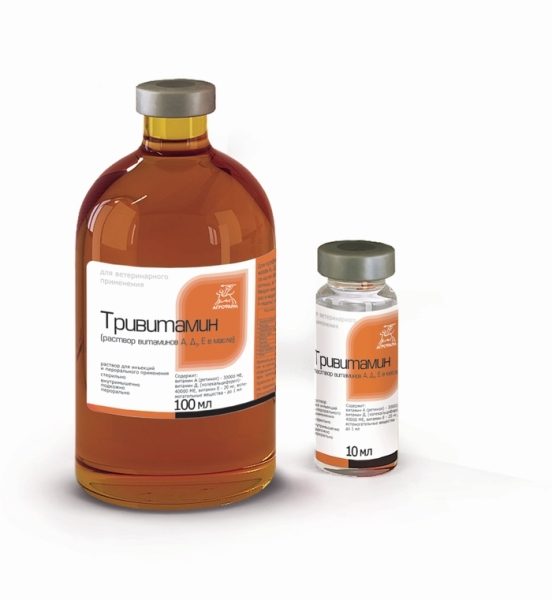
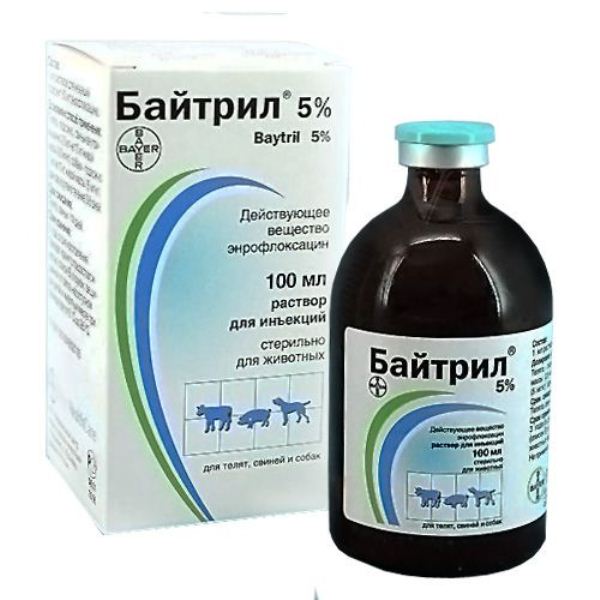
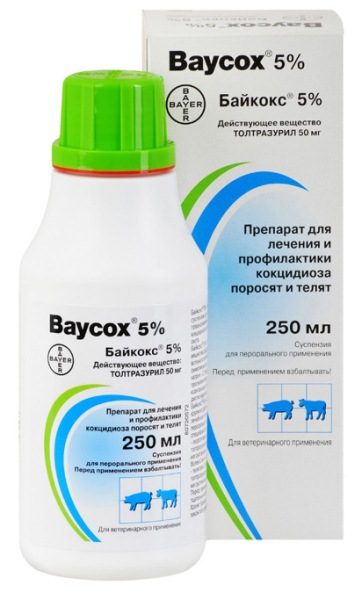
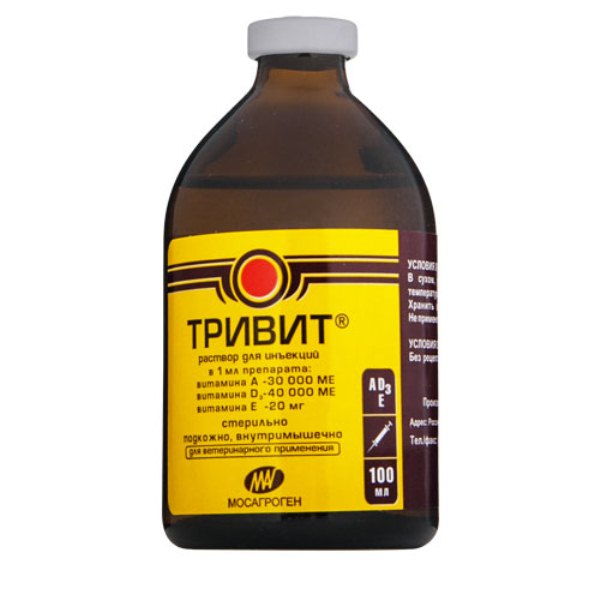
In order for young animals to be sick less or not to be ill, there should be proper care at all, as well as to preventive actions, including sanitary treatment of the premises, feeders, drinkers and equipment.
Using quality feed with a proportion of selected composition - the key to rapid growth of young. If it is not purchased feed, the composition is selected empirically and depends on the breed of chickens, the purpose of growing, the presence of green mass and the possibility of walking.

the grandmother in the village used to grow chickens. while they were very small, they were brought to live in a house so that they would be warm. until the feathers appear, they will grow up and become stronger and live, and then let out. in the kitchen there was a large cardboard box full of yellowish lumps. a squeak from them)) fed them with eggs and millet, too.